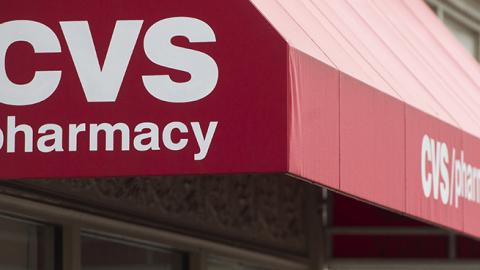For too long many companies have catered to the wealthiest and healthiest consumers—the ones who can afford to pay for organic non-GMO groceries, hire personal trainers and go to the doctor without worrying about insurance co-pays. But these firms are overlooking a potentially big market: the poor who can’t afford healthy food, expensive medical services and lifestyles that the more fortunate take for granted.
It’s time for companies that affect our health to focus on the lower-income market. Seen as a moral obligation to many, it also represents an economic opportunity. Forward-thinking corporations like CVS Health and retailer Dollar General already realize this.
Who are these overlooked people? They are the nearly 40 million Americans living in poverty in 2017, and the 39 million who have limited access to healthy food stores. They are the nearly 73 million who rely on Medicaid; the nearly half of college students who struggle to pay for food; and the more than half of low-income Americans age 50 and older who say they want a healthy diet but can’t afford it.
The problem of unequal access to health is complex. It involves longstanding economic and racial disparities, out-of-control housing prices and other factors that can’t be solved by industries alone. The Robert Wood Johnson Foundation, in its mission to build a “Culture of Health,” says it requires “removing obstacles to health such as poverty, discrimination, and their consequences, including powerlessness and lack of access to good jobs with fair pay, quality education and housing, safe environments, and health care.”
That’s a tall order, and it will require many players in government, the nonprofit and private sectors to work together.
I believe that companies aren’t doing enough. Why? The major deterrent is that the economics remain challenging. It’s far more profitable and understandable for food companies to offer non-GMO, gluten-free and organic options for well-heeled customers.
Nonetheless, corporations must wake up to the revenue and profit opportunities in providing affordable products and services to the poorest among us. Here are a few companies in the retail space that are showing how it can be done:
* Nearly 3 in 4 smokers live in lower-income communities, and stores selling tobacco products are disproportionately located there. After drug retailer CVS Health banned tobacco sales in 2014, it weathered a $2 billion hit to sales. But the move paid off in discouraging smoking: CVS says overall, smoking decreased by 95 million packs in states where it has more than a 15% market share. Moreover, CVS’s overall sales have risen since then, due to its re-positioning as a health company. This would not have been possible without getting rid of cigarette revenues. It’s now taking steps to offer more comprehensive health services at a far cheaper cost than emergency rooms. The new services will focus on managing chronic illnesses, which CVS says costs the US more than $2 trillion annually, including about $500 billion in avoidable costs. CVS notes that saving the health care system money improves its own bottom line.
* Dollar General, whose primary customers are concerned about value and come from lower-income households, last year revamped about 450 of its stores to include fresh fruits and vegetables. “The ability to offer produce, particularly in areas with limited grocery availability, represents an attractive growth opportunity for Dollar General in the years ahead,” said CEO Todd Vasos. These items “drive a tremendous amount of traffic,” he noted. The chain has also recently added 125 “better-for-you” items under its Good & Smart private label brand and Vasos noted these were performing better than expected. Given the growing threat of discount grocery sellers such as Aldi and Lidl, the strategy not only helps Dollar General’s customers, but should also provide more competitive insulation.
* Philadelphia grocery store chain Brown’s Super Stores—a successful for-profit business—is a proponent of the “social design” process, selling suburban quality food in poor “food desert” neighborhoods in Philadelphia. Their approach focuses on delivering positive results for both business and the community. Founder Jeffrey Brown first worked with community leaders to see what types of food and services would most benefit the neighborhoods where he opened his stores. Subsequently, Brown's Super Stores has helped educate shoppers about healthy eating, weight and diabetes management, and reading food labels. Brown has also founded a non-profit called UpLift Solutions that trains former prison inmates and places them in jobs in his stores.
* The opportunity for smart phone apps that improve access to health is vast, since more than 92% of Americans who make less than $30,000 a year own cell phones. Propel’s Fresh EBT, a free app, is helping more than 1.5 million Americans manage their food stamp benefits. It lets them check balances and find stores that accept food stamps—a marketing boon for those retailers. It also makes money for Propel through digital coupons and by providing a job board. Founder Jimmy Chen calls it a “more user-friendly safety net.” The company has attracted a number of serious investor groups, such as Andreessen Horowitz and Kleiner Perkins Caufield & Byers, which believe Propel could build a massive business by fighting poverty.
* More large food companies need to recognize both the problem and the opportunity from food waste, which is currently at 40% of the food supply. In Boston, where pockets of poverty exist cheek to jowl with swanky neighborhoods, former Trader Joe’s CEO Doug Rauch has opened two deep discount supermarkets called Daily Table. The stores secure food from other supermarkets, growers and food distributors that would otherwise have been wasted. Daily Table then sells fresh produce and other groceries that are approaching their sell-by dates but are still safe and tasty to people in need. This creative model enables Daily Table to price its healthy meal options to compete with the fast-food alternatives nearby. Because Daily Table is a non-profit, its suppliers, which include supermarket giants Whole Foods and Wegmans as well as smaller retail stores, gain federal tax credits from donating their unwanted food.
Serving the low-income market profitably has never been easy. But if more companies and their armies of R&D, logistics and marketing experts create and embrace innovative ideas that improve overall health, they will find new, better and more profitable ways to serve the underserved – and to do well by doing good.

















